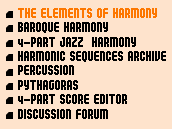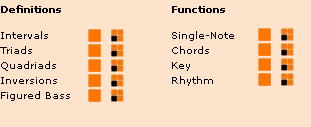


The Elements of Harmony > Rhythm (basic)


What is Rhythm?
When musical events, such as note pitches or intensities, are repeated, the event succession
often displays a pattern. As this pattern repeats itself over and over, it will manifest a regularly repeated pulse, or beat, known as rhythm.
The notation of rhythm is based upon how we divide the space between two identical points in
the rhythm.
If two rhythmic events occur between identical points, the rhythm is binary.
If three rhythmic events occur between identical points, the rhythm is ternary.
These basic binary or ternary groupings of rhythmic events are usually notated between bar
lines, forming what we call measures. If each measure contains 2 rhythmic events, the measure
has duple metre. If each measure contains 3 rhythmic events, it has triple metre.
Furthermore, the rhythmic events themselves can each be subdivided into 2 or 3 parts.
-
subdivision into 2 parts is called simple.
-
subdivision into 3 parts is called compound.
The speed at which this pulse occurs is known as the tempo.
The following diagram shows four subdivision levels of a basic pulse, using simple
(i.e. binary) subdivision.
The following diagram shows four subdivision levels of a basic pulse, using compound (i.e. ternary) subdivision. (Note: parts of the diagram have been left out to save space).
In summary, once the metre has been established as duple or triple, each pulse, or beat, within the metre can be replaced with binary or ternary subdivisions. The Rhythm (in-depth) section shows
some rhythmic combinations.
The Elements of Harmony | Baroque Harmony | 4-Part Jazz Harmony | Harmonic Sequences Archive | Percussion | Pythagoras | 4-Part Score Editor | Discussion Forum